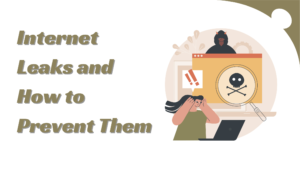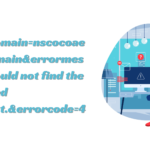Navigating the World of Cyber Vulnerability Assessments for a Safer Digital Environment
- 1 What Are Vulnerability Assessments?
- 2 Importance of Conducting Assessments
- 2.1 Key Components of a Vulnerability Assessment
- 2.2 Standard Methodologies Used in Assessments
- 2.3 Challenges and Solutions
- 2.4 Real-World Examples of Assessments in Action
- 2.5 Future Trends in Vulnerability Assessments
- 3 Tips for an Effective Assessment Process
What Are Vulnerability Assessments?
Vulnerability assessments are a cornerstone in maintaining the integrity and security of any organization’s digital framework. By conducting a comprehensive analysis of computer systems, these assessments aim to uncover potential security weaknesses that malicious entities could exploit. An organization’s digital health often hinges on how vulnerability assessments uncover critical network weaknesses, pinpointing areas requiring fortification before they lead to catastrophic data breaches.
As our global reliance on digital infrastructures grows, the methods and strategies for protecting these systems must evolve. Vulnerability assessments provide a proactive stance in defensive cybersecurity, ensuring organizations stay ahead of would-be attackers. This continuous vigilance protects intangible resources like data, which can be as valuable as physical assets in the current age.
Importance of Conducting Assessments
Regular vulnerability assessments become fundamental in an environment where cyberattacks can ripple outward, affecting global markets and personal privacy. They allow organizations to detect and preemptively address weak links in their cyber defense strategies. The possible consequences of a security breach can be significant, from severe financial losses to lasting harm to a company’s reputation with its clients and colleagues.
Multiple studies highlight the cost-effectiveness of such assessments, often preventing incidents that could otherwise result in damages amounting to millions of dollars. Therefore, vulnerability assessments serve as a security measure and a financial safeguard, preserving resources and trust within the organizational sphere.
Key Components of a Vulnerability Assessment
- Identifying assets: The initial step involves cataloging an organization’s digital and physical assets. This clear inventory allows IT teams to outline the necessary protective measures for each asset.
- Prioritizing risks: Once identified, vulnerabilities are ranked according to severity and potential impact. This ranking system ensures that the most critical problems are dealt with first, maximizing time and resources.
- Evaluating system security: By testing systems against an updated database of known vulnerabilities, organizations can determine the effectiveness of their current security measures, allowing for adjustments where necessary.
- Planning remediation involves developing strategic solutions to address the identified vulnerabilities. This component is crucial for ensuring that threats are identified and effectively mitigated.
Standard Methodologies Used in Assessments
Vulnerability assessments employ a variety of methodologies, each suited to different parts of an organization’s infrastructure. These methodologies are adaptable, allowing organizations to tailor their assessments to their specific needs and concerns:
- Network-based scans: These methods examine the organization’s network architecture, seeking unsecured entry points that attackers can target, thereby ensuring the network’s defenses can detect and repel potential intrusions.
- Host-based assessments: Focusing on individual computers and servers, this methodology is critical in examining endpoints, which are frequent targets of cyberattacks. Ensuring the robustness of these endpoints helps protect the network as a whole.
- Application-based analyses: Given the numerous applications most organizations rely on, this method evaluates software applications for security holes, ensuring they are not pathways for attacks.
Challenges and Solutions
While the benefits of vulnerability assessments are undeniable, conducting them can be fraught with challenges. Common obstacles include resource constraints, which can prevent thorough evaluations due to a lack of time, personnel, or financial support. Additionally, as technology advances, the complexity of potential vulnerabilities increases, making it more challenging to discover and address all possible threats.
Solutions lie in automating much of the assessment process—using cutting-edge software tools to carry out routine checks precisely. Moreover, seeking external expertise or consulting firms with specialized knowledge can fill capability gaps, ensuring robust analyses and effective security defenses.
Real-World Examples of Assessments in Action
Numerous success stories showcase how vulnerability assessments can protect an organization from harm. Consider a large multinational corporation that identified critical system weaknesses through systematic assessments. By addressing these gaps, the company was able to thwart a planned attack that could have compromised customer data and cost the company millions. These instances underscore the significance of taking proactive security steps in a world where cyber threats are constantly looming.
Future Trends in Vulnerability Assessments
The cybersecurity landscape is dynamic, with emerging trends adding layers to vulnerability assessments. Artificial Intelligence (AI) is becoming integral to assessments, offering enhanced risk identification and response times capabilities. With AI, patterns that hint at vulnerabilities can be identified far quicker than manual assessments alone. Furthermore, the shift towards real-time assessments constantly appraises the security environment, allowing immediate action when threats are detected.
Tips for an Effective Assessment Process
- Define clear objectives: Understanding what the assessment aims to achieve ensures the process remains focused and efficient.
- Employ standardized tools: Utilize reliable, industry-standard tools to conduct assessments, increasing the accuracy and reliability of assessments.
- Regularly update your assessment techniques: Cyber threats evolve rapidly; staying informed about new vulnerabilities and updating strategies accordingly keeps defenses robust.
- Collaborate with cross-functional teams: Engaging various departments allows for a thorough grasp of potential security threats and promotes a security-aware culture throughout the organization.

















